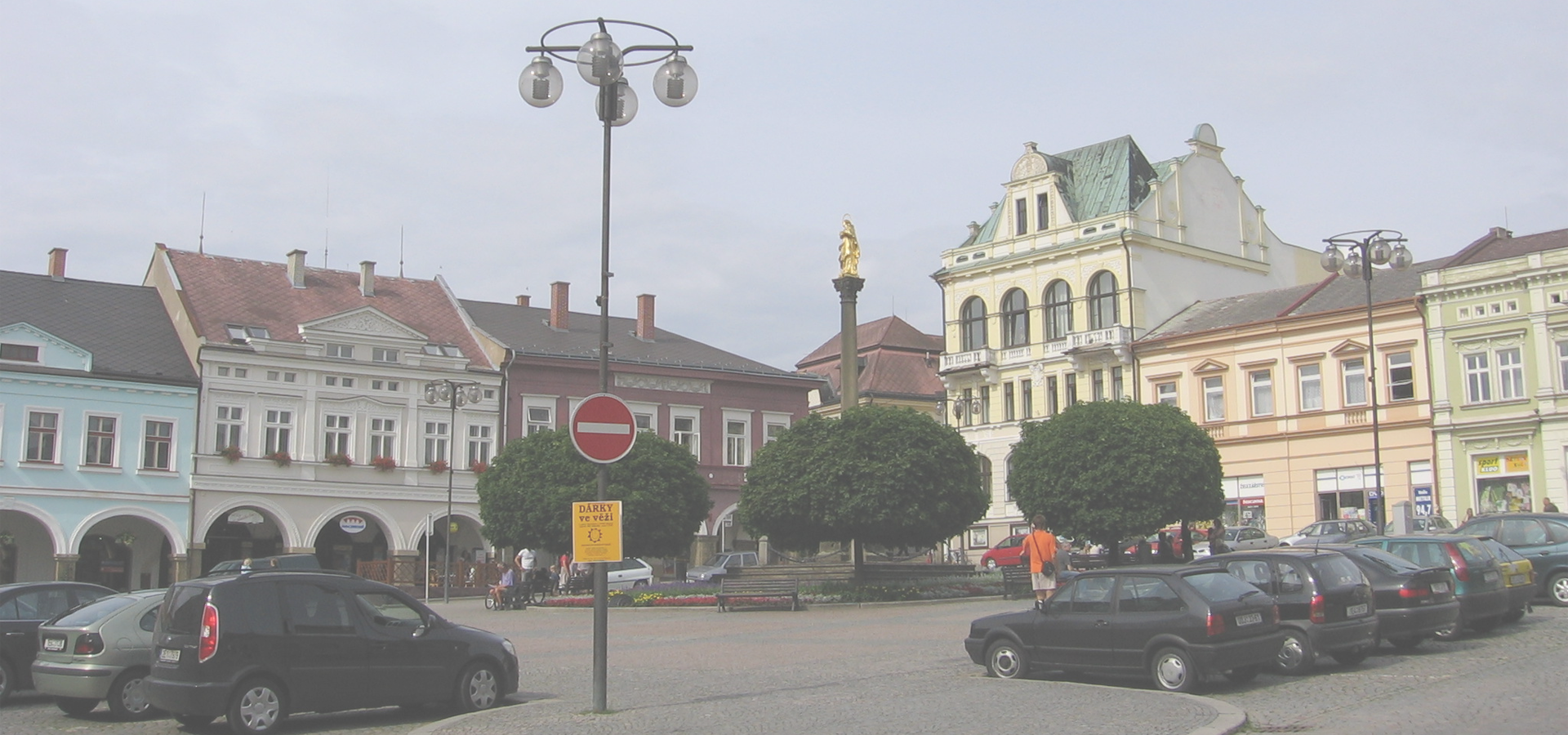Lanškroun, Ústí nad Orlicí District, Pardubice Region, Czech Republic
🇨🇿 Lanškroun is a town in Ústí nad Orlicí District in the Pardubice Region of the Czech Republic. It lies on the border of the historical lands of Bohemia and Moravia. The town centre is well preserved and is protected by law as an urban monument zone.
Administrative parts Lanškroun is made up of town parts of Dolní Třešňovec, Lanškroun-Vnitřní Město, Ostrovské Předměstí and Žichlínské Předměstí.
Etymology The original historic name of Lanškroun was Landeskrone, meaning "Land's crown". It referred to its location on the border of the historical lands of Bohemia and Moravia.
Geography Lanškroun is located about 10 km (6 mi) north-east of Ústí nad Orlicí and 50 km (31 mi) east of Pardubice. It lies in the Orlické Foothills. The highest point is at 449 m (1,473 ft) above sea level.
The Třešňovský Stream flows through the town. In the north-western part of the municipal territory is a set of six ponds on the Ostrovský Stream. The largest of them is Dlouhý, used for recreational purposes and water sports. The northernmost ponds Pšeničkův and Olšový and the area around the Zadní Stream before its confluence with Ostrovský Stream are protected as a nature reserve within the Lanškroun Ponds Nature Park.
History The first written mention of Lanškroun is from 1285, when it was donated by King Wenceslaus II to Zavis of Falkenstein. Lanškroun was founded during the colonization in the second half of the 13th century under the name Landeskrone. It became the economical centre of the large estate of Lanšperk and later of separate Lanškroun estate.
In 1304, Lanškroun property of the Zbraslav Monastery and in 1358, it was acquired by Roman Catholic Diocese of Leitomischl. In 1371, an Augustinian monastery was founded. In 1421, the town was conquered by Jan Žižka. After the Hussite Wars, the estate was acquired by the noble family of Kostka of Postupice. It began to prosper and obtained various privileges. In 1507, it was bought by the Pernštejn family. Then it was shortly held by the Hrzáns of Harasov, and after the Battle of White Mountain, it was bought by the Liechtenstein family.
During the Thirty Years' War, the town was repeatedly burned down and looted by the Swedish army and the catholicization began. After the war, the population was significantly decreased. It was repopulated by German settlers and in 1683, German has become the official language.
During the 18th century, Lanškroun was an average serf town. In 1848, the serfdom was abolished and Lanškroun became a district town. In the 1870s, the industrialization began. The railway was built in 1884–1885.
Until 1918, the town was part of Austria-Hungary as the seat of the district Landskron in Bömen, one of the 94 Bezirkshauptmannschaften in Bohemia. After 1919 it became part of Czechoslovakia. In 1938 it was occupied by German troops as the Protectorate of Bohemia and Moravia, according to the Munich Agreement.
Until the expulsion of the German speaking population from Lanškroun in 1946, the majority of population of the town had been German. After the expulsion, the town became completely Czech. In 1945, it ceased to be a district town.
Economy Lanškroun is an industrial town. The most important sectors are the electronics industry, engineering and paper industry. The largest employers are Kyocera AVX Component and Schott CR (both manufacturers of electronic components), and Schaeffler Production CZ (manufacturer of rolling element bearings).
Transport Lanškroun is the terminus of a short local railway line heading from Česká Třebová.
Sights Lanškroun is known for its large Renaissance town hall, which is one of the symbols of the town. It was built in 1581–1582. The two original Renaissance portals are preserved.
The original monastery from the 14th century was rebuilt into a Renaissance castle. The reconstruction was completed in 1601. From the 1650s to 1716, it was rebuilt to its current appearance. Today it houses the town museum. The Church of Saint Wenceslaus is adjacent to the castle and stood here before the founding of the monastery. It was first mentioned in 1350 and originally was consecrated to the Virgin Mary. It was reconstructed several times; the tower was added in 1768.
Europe/Prague/Usti_nad_Orlici_District

Lanškroun has a population of over 9,800 people. Lanškroun also forms part of the wider Ústí nad Orlicí District which has a population of over 138,242 people. It is also a part of the larger Pardubice Region. Lanškroun is situated near Ústí nad Orlicí.
Twin Towns, Sister Cities Lanškroun has links with:
🇮🇹 Castiglione in Teverina, Italy 🇵🇱 Działdowo, Poland 🇵🇱 Dzierżoniów, Poland 🇭🇺 Hajdúszoboszló, Hungary 🇸🇰 Kežmarok, Slovak Republic 🇵🇱 Serock, Poland🇩🇪 Groß-Gerau 49.917
🇺🇦 Industrialnyi 49.95
🇩🇪 Karlstadt am Main 49.95
🇵🇱 Jastrzębie-Zdrój 49.95
🇩🇪 Tirschenreuth 49.878
🇭🇺 Szombathely 16.622
🇮🇹 Corigliano-Rossano 16.633
🇳🇦 Otjiwarongo 16.65
🇵🇱 Dzierżoniów 16.653
Locations Near: Lanškroun 16.6116,49.912
🇨🇿 Svitavy 16.467,49.75 d: 20.8
🇨🇿 Šumperk 16.976,49.965 d: 26.7
🇵🇱 Kłodzko 16.665,50.437 d: 58.4
🇨🇿 Blansko 16.645,49.363 d: 61.1
🇨🇿 Kuřim 16.517,49.283 d: 70.2
🇨🇿 Prostějov 17.1,49.467 d: 60.7
🇨🇿 Olomouc 17.252,49.595 d: 57.9
🇨🇿 Žďár nad Sázavou 15.933,49.55 d: 63.2
Antipodal to: Lanškroun -163.388,-49.912
🇹🇴 Nuku'alofa -175.216,-21.136 d: 16650.4
🇵🇫 Papeete -149.566,-17.537 d: 16208.8
🇦🇸 Pago Pago -170.701,-14.279 d: 15997.7
🇼🇸 Apia -171.76,-13.833 d: 15931.7
🇺🇸 Hilo -155.089,19.725 d: 12228.7
🇺🇸 Maui -156.446,20.72 d: 12131.4
🇺🇸 Maui County -156.617,20.868 d: 12116.4
🇺🇸 Wailuku -156.505,20.894 d: 12112.6